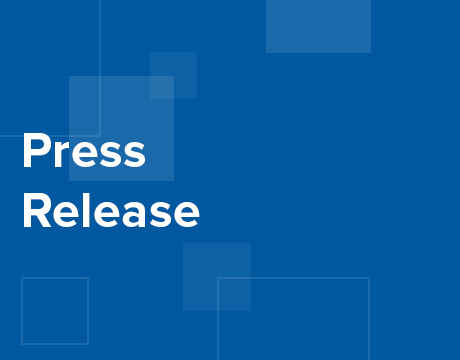Special Journal Issue on Digital Twins: A New Frontier in Critical Infrastructure Protection and Resilience
Special Journal Issue on Digital Twins: A New Frontier in Critical Infrastructure Protection and Resilience
The ASCE-ASME Journal of Risk and Uncertainty in Engineering Systems, Part B: Mechanical Engineering
is currently accepting manuscripts for a special issue focusing on the topic “Digital Twins: A New Frontier in Critical Infrastructure Protection and Resilience.” Authors who are interested in having their manuscripts included in the special issue, to be published in June 2023, should submit their manuscripts by December 31, 2022.
A digital twin is a computational model (or set of coupled) that evolves over time to persistently represent the critical structure, its components, system, or process. Digital twin underpins intelligent automation by supporting data-driven decision making and enabling asset specific analysis and system behavior. Within the contexts of critical Infrastructure systems, the digital twins represent the flow of information among connected platforms. In the future, as many agencies turn to digital twin capabilities, they must migrate toward continuous real-time performance models and calibrate by pairing data from real-time sensors, meters, weather, and other data.
The digital twin can be used to run “what-if” scenarios, predict and prevent failures, provide early alerts of anomalies, and conduct predictive analysis. The strength of a digital twin is the interconnectivity of data and models. The main characteristics of a digital twin are a) trustworthy and accurate digital representation of the critical infrastructure systems which can provide a framework for computational speeds, hence model order reduction; b) feedback loops that can enable near real-time data transfer between the virtual replicate and critical infrastructure systems; c) numerical, including machine learning which provides a platform for the fusing of data and models, and transfers of learning processes that can provide prognostic capabilities.
The special issue is aimed at gathering contributions that discuss the formulation and solution of digital twin application in critical infrastructure systems. The papers will cover both theoretical and case studies addressing how the digital twin is tied to predictive maintenance and resilience.
Manuscripts to be included in the special issue should concentrate on a range of topics including digital twins and cyber resilience; developing more realistic predictive maintenance models; data-driven critical infrastructure monitoring; graphical probability models and digital twins; and case studies.
To address the publication of multiple relevant topics for the special issue, the first step for authors is the submission of a title, authors and affiliation, and a short abstract. Completed papers will be reviewed by the guest editors to ensure relevance prior to formal submission and review.
Manuscripts should be submitted electronically to the journal by December 31, 2022, via Journals Connect at journaltool.asme.org. Authors who already have an account should log in as an author to their ASME account. Authors who do not have an account should sign up for an account. In either case at the Paper Submittal page, authors should select the “ASCE-ASME Journal of Risk and Uncertainty in Engineering Systems, Part B: Mechanical Engineering” and then select the special issue “Digital Twins: A New Frontier in Critical Infrastructure Protection and Resilience.”
The special issue will include papers from invited authors of the highest quality. A preliminary screening based on 200-word abstracts is implemented to assess the relevance of the contribution to the special issue, as well as to ensure that all envisioned topics are covered. The guest editors collectively have significant expertise in reviewing scientific papers and editing journals and have strong familiarity with the topic of the special issue. After the review process, the guest editors will check the accepted papers to make sure that the language is clear and concise. Finally, the special issue will be widely publicized to guarantee a high number of citations of published papers for the benefit of the journal.
The special issue guest editors are Nii Attoh-Okine, PhD, University of Delaware, USA, okine@udel.edu; and Yaw Adu-Gyamfi, PhD, University of Missouri, USA, adugyamfiy@missouri.edu.
For more information on the ASCE-ASME Journal of Risk and Uncertainty in Engineering Systems, Part B: Mechanical Engineering, visit https://asmedigitalcollection.asme.org/risk. To learn more about the ASME Journal Program, visit www.asme.org/publications-submissions/journals/information-for-authors.
is currently accepting manuscripts for a special issue focusing on the topic “Digital Twins: A New Frontier in Critical Infrastructure Protection and Resilience.” Authors who are interested in having their manuscripts included in the special issue, to be published in June 2023, should submit their manuscripts by December 31, 2022.
A digital twin is a computational model (or set of coupled) that evolves over time to persistently represent the critical structure, its components, system, or process. Digital twin underpins intelligent automation by supporting data-driven decision making and enabling asset specific analysis and system behavior. Within the contexts of critical Infrastructure systems, the digital twins represent the flow of information among connected platforms. In the future, as many agencies turn to digital twin capabilities, they must migrate toward continuous real-time performance models and calibrate by pairing data from real-time sensors, meters, weather, and other data.
The digital twin can be used to run “what-if” scenarios, predict and prevent failures, provide early alerts of anomalies, and conduct predictive analysis. The strength of a digital twin is the interconnectivity of data and models. The main characteristics of a digital twin are a) trustworthy and accurate digital representation of the critical infrastructure systems which can provide a framework for computational speeds, hence model order reduction; b) feedback loops that can enable near real-time data transfer between the virtual replicate and critical infrastructure systems; c) numerical, including machine learning which provides a platform for the fusing of data and models, and transfers of learning processes that can provide prognostic capabilities.
The special issue is aimed at gathering contributions that discuss the formulation and solution of digital twin application in critical infrastructure systems. The papers will cover both theoretical and case studies addressing how the digital twin is tied to predictive maintenance and resilience.
Manuscripts to be included in the special issue should concentrate on a range of topics including digital twins and cyber resilience; developing more realistic predictive maintenance models; data-driven critical infrastructure monitoring; graphical probability models and digital twins; and case studies.
To address the publication of multiple relevant topics for the special issue, the first step for authors is the submission of a title, authors and affiliation, and a short abstract. Completed papers will be reviewed by the guest editors to ensure relevance prior to formal submission and review.
Manuscripts should be submitted electronically to the journal by December 31, 2022, via Journals Connect at journaltool.asme.org. Authors who already have an account should log in as an author to their ASME account. Authors who do not have an account should sign up for an account. In either case at the Paper Submittal page, authors should select the “ASCE-ASME Journal of Risk and Uncertainty in Engineering Systems, Part B: Mechanical Engineering” and then select the special issue “Digital Twins: A New Frontier in Critical Infrastructure Protection and Resilience.”
The special issue will include papers from invited authors of the highest quality. A preliminary screening based on 200-word abstracts is implemented to assess the relevance of the contribution to the special issue, as well as to ensure that all envisioned topics are covered. The guest editors collectively have significant expertise in reviewing scientific papers and editing journals and have strong familiarity with the topic of the special issue. After the review process, the guest editors will check the accepted papers to make sure that the language is clear and concise. Finally, the special issue will be widely publicized to guarantee a high number of citations of published papers for the benefit of the journal.
The special issue guest editors are Nii Attoh-Okine, PhD, University of Delaware, USA, okine@udel.edu; and Yaw Adu-Gyamfi, PhD, University of Missouri, USA, adugyamfiy@missouri.edu.
For more information on the ASCE-ASME Journal of Risk and Uncertainty in Engineering Systems, Part B: Mechanical Engineering, visit https://asmedigitalcollection.asme.org/risk. To learn more about the ASME Journal Program, visit www.asme.org/publications-submissions/journals/information-for-authors.



